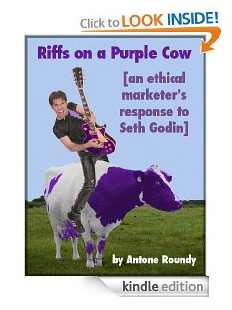When you purchase through links on our site, we may earn an affiliate commission (details)
Getting People to Vote…For You…With Their Wallets
by Antone Roundy | Add Your Comments | Blogging, Marketing, Podcast
Tomorrow is election day around here. Which party is the most successful at convincing people to vote could determine who's in control of the country for the next few years. Last week, I read a report about techniques used to get people out to vote, and it got me thinking about marketing.
In the run up to the election two years ago, a couple of behavioral scientists did an experiment. They called people to encourage them to vote using three different scripts to see which worked best.
The first basically reminded people to vote and told them it was important.
The second did the same, and asked whether they intended to vote.
The third also asked them what time them planned to vote, where they'd be coming from, and what they planned to do before voting.
It's well known that getting a commitment (the second script) increases follow-through. But the third script boosted voter turnout the most: by 4%. Among households with only one eligible voter, turnout increased by 9.1% -- more than enough to swing many elections.
But this post isn't about politics -- it's about marketing. It's about getting people to "vote" for you with their wallets.
What the study showed is that you can increase conversions most by getting people to think about specifically how they're going to do what you want them to do, and how it fits into the bigger picture of their lives.
You've heard that your marketing needs a call to action -- you should tell your prospects to subscribe, buy, respond, etc. And tests have shown that specific, detailed instructions lead to more conversions.
But you need to look beyond the call to action.
Is your sales letter painting a detailed picture of how your prospect's life will look with your product in it? If you could get them to imagine in detail how your product will fit into their current routine right at their biggest pain point and make it go away, how powerful would that be?
Even if they leave your sales page without ordering, the next time they hit that pain point, they'll remember your product and may come back to buy.
Remember, there are two keys: specific details, close to the point of action; and getting the prospect to internalize the message.
You could tell the story of someone else's experience with your product. And that's good. But even better is to get them to imagine their own experience. How do you do that?
With questions. Here's an example:
Would your blog be better if you posted more often?
What happened the last time you wanted to blog but came up dry? If you're like most bloggers, you sat down at the computer, stared at the screen, thought of and rejected a few ideas, and then let yourself get distracted by your email or Facebook.
What if instead, each time you sat down to write, someone gave you a list of specific, good ideas to write about, each with a quote or two to use to start your post? What if instead of having to copy and paste into your blog editor, you could type up your post and publish it right from the list?
Do you think you'd blog more often? Do you think your readers would like what you wrote?
Let me tell you about a blogging tool I use that does exactly that.
There are six questions in that pitch. Notice that they focus mostly on the positive. As I wrote in September, that's important, especially for the first question.
I could have led with "Do you blog as often as you'd like?" Most people would have answered "no". Most probably would have gotten the hint that I was about to introduce a way to blog more often. But they would have been reading from a negative mindset.
You want your prospects thinking positive -- ready to feel like they're enjoying your product already. You want to start off with the promise that things can be better.
Also notice how specific the second question is. I could have asked "what happens when you sit down to blog?" or "what happened the last time you sat down to blog?"
First of all, the questions are too abstract. Too easy pass over without creating a mental image. And what if they'd imagined a time they'd succeeded in writing a post? No pain for the product to cure.
The question specifically asked about a time they came up dry. Ouch. Any blogger who's not an idea-generating superhero knows that pain.
The question is followed by details of a common scenario that may be exactly what they experience. And if not, it's probably close enough for them to relate to.
And then, after the picture of pain had been painted, came the fulfillment of the promise of relief: "What if instead...", and a happy ending to the old painful experience unfolds. And I didn't stop at just the single blogging experience, but added a few more questions help the customer paint the whole picture of a more vibrant blog with happy readers.
I've drifted away from the voter turnout example a bit, but the point is similar. Get your prospects to focus on specifics and imagine the actions you want them to take within the context of their own lives.




